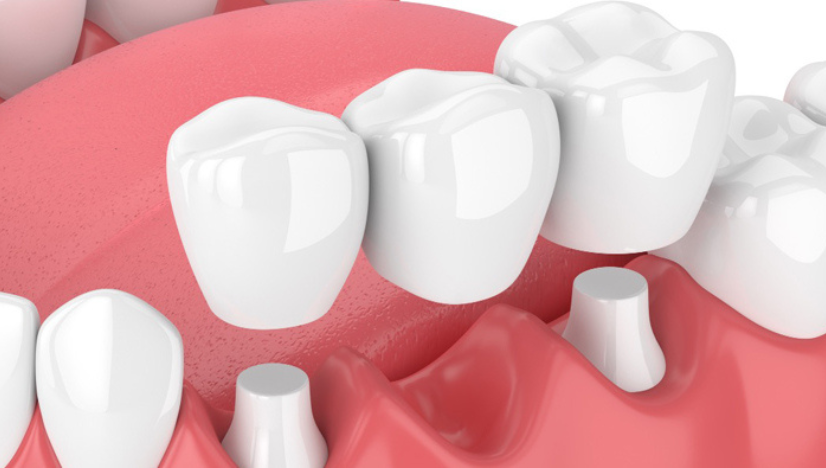Bridging the Gap: Understanding the Different Types of Dental Bridges

Missing teeth can impact more than just your smile; they can affect your ability to eat, speak, and feel confident. Dental bridges offer a solution to fill these gaps, restoring function and appearance. But how do you choose the right type of bridge? Here’s a comprehensive look at the various options available, helping you make an informed decision.
Types of Dental Bridges
When exploring options to replace missing teeth, it’s crucial to understand the different types of dental bridges. Each type has its own set of benefits and considerations, making it essential to choose one that fits your needs and lifestyle.
Traditional Bridges
Traditional dental bridges are the most common type. They consist of one or more artificial teeth supported by crowns on the adjacent natural teeth.
How They Work
A traditional bridge involves placing crowns on the teeth adjacent to the gap, which act as anchors for the false tooth or teeth. This setup allows for a stable and natural-looking replacement.
Benefits
- Durability: Traditional bridges are known for their strength and durability. They can last many years with proper care.
- Natural Appearance: They blend seamlessly with your natural teeth, providing a polished, aesthetically pleasing look.
Considerations
- Preparation of Adjacent Teeth: The adjacent teeth must be prepared by removing some of their structure to place the crowns, which may not be ideal for everyone.
- Maintenance: Regular dental check-ups with your dentist are essential to ensure the longevity and health of both the bridge and surrounding teeth.
Cantilever Bridges
Cantilever bridges are similar to traditional bridges but are supported only on one side. This type is often used when there are adjacent teeth on only one side of the gap.
How They Work
A cantilever bridge involves attaching a false tooth to a single adjacent tooth. This design is ideal for areas where only one neighboring tooth is available for support.
Benefits
- Less Tooth Reduction: Fewer adjacent teeth need preparation, preserving more of your natural tooth structure.
- Cost-Effective: Cantilever bridges can be less expensive than traditional bridges due to the reduced need for multiple crowns.
Considerations
- Potential for Movement: Because cantilever bridges are supported on only one side, they might be more prone to movement or stress, especially in the back of the mouth where chewing forces are stronger.
- Limited Application: They are typically not suitable for large gaps or areas with high bite pressure.
Maryland Bridges
Maryland bridges, also known as resin-bonded bridges, use a framework of metal or porcelain to support the artificial tooth. These bridges are bonded to the back of the adjacent teeth using resin.
How They Work
Maryland bridges involve attaching a metal or porcelain framework to the back of the adjacent teeth, with the false tooth secured in place. This process doesn’t need crowns on the adjacent teeth.
Benefits
- Minimal Tooth Preparation: This type of bridge requires less alteration of the adjacent teeth compared to traditional bridges.
- Aesthetic Appeal: Maryland bridges can be made to match the color of your natural teeth, making them an attractive option.
Considerations
- Durability: While generally durable, Maryland bridges may not be as long-lasting as traditional bridges, particularly under heavy bite forces.
- Bonding: The success of a Maryland bridge depends on the strength of the resin bond, which may not be as robust as other types.
Implant-Supported Bridges
Implant-supported bridges use dental implants as anchors instead of natural teeth. This type is particularly beneficial for individuals who have lost several teeth.
How They Work
Dental implants are placed into the jawbone, and once they integrate with the bone, they serve as stable anchors for the bridge. This design can support multiple false teeth with fewer implants.
Benefits
- Bone Preservation: Implants help maintain the jawbone’s density, which can be compromised by missing teeth.
- Stability: They provide excellent stability and do not require alteration of adjacent teeth.
Considerations
- Surgical Procedure: The placement of dental implants involves a surgical procedure, which may require a longer recovery time.
- Cost: Implant-supported bridges generally cost more due to the expense of the implants and the surgical procedure.
Choosing the Right Bridge for You
Selecting the right type of dental bridge depends on various factors, including the location of the gap, the condition of your adjacent teeth, and your budget. Here’s a simple guide to help you decide:
- Evaluate the Gap: The size and location of the gap in your teeth can determine which type of bridge is most suitable.
- Consider Adjacent Teeth: If adjacent teeth are in good condition and can support crowns, a traditional bridge might be a good option.
- Assess Bone Health: If you have significant bone loss, implant-supported bridges might be recommended to maintain jawbone structure.
Maintaining Your Dental Bridge
Proper care is essential to ensure the long-term durability of your dental bridge. Here are a few tips for keeping your bridge in top condition and ensuring your overall oral health:
- Daily Oral Hygiene: Brush your teeth and bridge thoroughly at least twice a day. Use a soft-bristled toothbrush and fluoride toothpaste to clean around the bridge and gums.
- Flossing: Flossing is essential to remove food particles and plaque that can accumulate around the bridge. Use special floss or an interdental brush to clean between the bridge and adjacent teeth.
- Regular Dental Visits: Visit your dentist regularly for check-ups and cleanings. Professional cleanings and examinations will help maintain the health of your bridge and detect any issues early.
Dental bridges offer a valuable solution for restoring missing teeth and improving oral function. By understanding the different types of bridges and their benefits, you can make an informed choice that aligns with your needs and preferences. Consulting with your dentist Houston will help you determine the most suitable option for achieving a healthy and confident smile.

